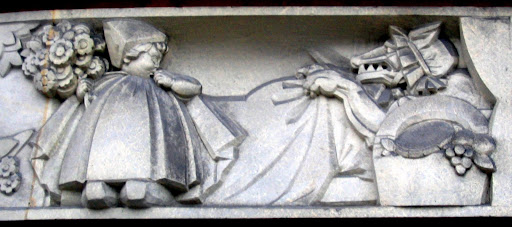At his cotton mill on the Falls of Clyde, in the 1810s and 1820s, philanthropic employer and 'father of socialism' Robert Owen opened an 'Institute for the Formation of Character' for children aged 18 months to 6 years, and a school for children of six upwards. For children's education Owen placed music and visual stimuli above book and rote learning. So his classrooms were enhanced with images, not murals, but large scale images to fire the imagination, support enquiry and raise questions in children's minds. Believing in the environment as a key factor in the spiritual and emotional development of children and adults, he landscaped the already stunning surroundings of his factory to enhance the beauty of the landscape.
The site at New Lanark is now restored as a World Heritage Centre.


Less than a century later, in nearby Glasgow, Mackinstosh was commissioned by the School Board to build an elementary school in the industrial and dockside area of the city. Here he designed spaces, surfaces and decorative details, often insisting on his aesthetic judgment against the more cautious attitudes of the Board.
The building is now preserved as the
 Scotland Street School museum, and as a 'decorated school', its effect may be assessed beyond any functional or instructional value, for the impact its distinctive design must have had on pupils and teachers in their daily lives, and children in their growth and development.
Scotland Street School museum, and as a 'decorated school', its effect may be assessed beyond any functional or instructional value, for the impact its distinctive design must have had on pupils and teachers in their daily lives, and children in their growth and development.



